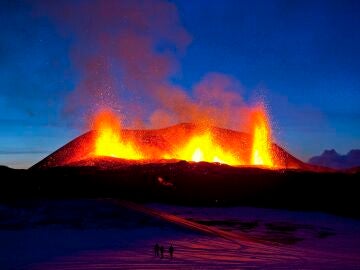
The situation in Iceland, faced with the risk of a impending volcanic eruption, has been critical for days and has led the authorities todeclare a state of emergency. However, six days after the first tremors were detected, seismic activity It remains stable near the town of Grindavík (southwest Iceland), with tremors that almost touch magnitude 3, and there have been few changes in the last few hours.
As for the magma, this Thursday it was around 500 meters from the surface. This proximity led Grindavík authorities to evacuate the city last Wednesday, because the probability of an eruption is still high.
Additionally, the flow of magma has slowed and levels of sulfur dioxide in the atmosphere have increased in recent days. Experts at the Icelandic Meteorological Office (IMO) believe this is an indicator that there may be an eruption.
“In the last eruptions we saw that it is precisely when this movement (of the magma) begins to reduce that the moment of the eruption approaches,” the IMO’s head of natural disaster monitoring, Kristín Jónsdóttir, explained on Icelandic public television.
A containment barrier is already being built
Faced with this situation, the authorities have begun the construction of a containment barrier with a height of between six and eight meters that is expected to be completed within a period 30 to 40 days. This uses gravel and soil that will be extracted from the nearby Stapafell mountain.
What area could it affect?
The volcanic eruption will probably occur somewhere along a line of 10 miles long which extends from the northeast of the city to a little out to sea.
A very uncertain situation
The probability of a powerful and long eruption is highbut it is not certain since predicting the place and the power is very complicated.
Furthermore, an eruption of fissure style: Cracks in the ground that open, often without warning, as magma beneath makes its way to the surface.
The precedents on the island
Scientists suspect that the eruption of 2021in which three weeks passed between earthquakes and the eruption, began a decades-long period of fissure eruptions across the peninsula.
This possible fourth eruption is certainly part of that new era.
Seismicity can be followed in real time
At this time, real-time seismic imaging has been enabled, which is an important tool to follow and detect the tremor signal.
Source: Lasexta
Ricardo is a renowned author and journalist, known for his exceptional writing on top-news stories. He currently works as a writer at the 247 News Agency, where he is known for his ability to deliver breaking news and insightful analysis on the most pressing issues of the day.











